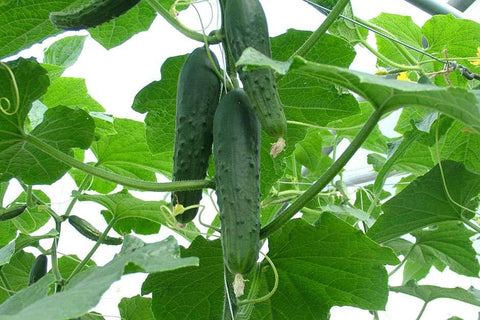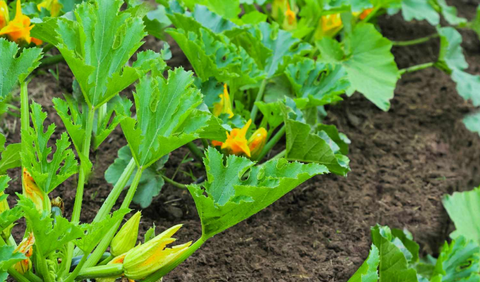Elevated gardening, particularly through the use of raised beds, offers a multitude of benefits that make it a worthwhile endeavor for both novice and experienced gardeners alike. From enhanced soil quality to improved accessibility, the advantages of elevated gardening extend far beyond the mere act of growing plants. Let's delve into why investing in raised beds can elevate your gardening experience to new heights.The following content also has some reference value for raised garden beds.
- Improved Soil Quality
- Weed Control
- Pest Management
- Extended Growing Season
- Accessibility and Ergonomics
- Space Optimization
- Water Conservation
- Aesthetic Appeal
- Cost-Effectiveness
- Conclusion
Improved Soil Quality
Enhanced drainage
One of the primary advantages of raised beds is their superior drainage capabilities. By elevating the planting area, excess water is able to drain away more efficiently, preventing waterlogging and root rot—a common issue in traditional ground-level gardens.
Better aeration
Raised beds promote better aeration of the soil, allowing roots to breathe and facilitating the breakdown of organic matter. This results in healthier soil conditions, fostering optimal plant growth and development.
Increased nutrient availability
The loose, well-aerated soil in raised beds promotes greater nutrient availability to plants. With improved access to essential nutrients, plants can thrive and produce higher yields, ultimately leading to more bountiful harvests.
Weed Control
Reduced weed growth
Elevated gardening significantly reduces weed growth compared to traditional ground-level gardening. The confined space of raised beds makes it easier to implement targeted weed control measures, minimizing the competition for nutrients and sunlight.
Easier weed management
Maintaining a weed-free garden becomes less labor-intensive with raised beds. The elevated height allows gardeners to tend to their crops without constantly stooping or kneeling, making it more convenient to spot and remove weeds as soon as they appear.
Pest Management

Elevated height deters some pests
The raised height of garden beds acts as a natural deterrent to certain pests, such as ground-dwelling insects and small mammals. This helps protect plants from damage and reduces the need for chemical pest control methods.
Easier pest inspection and control
With plants positioned at a more accessible height, gardeners can easily inspect for signs of pest infestation and implement targeted control measures as needed. This proactive approach to pest management can prevent widespread damage and ensure the health of the garden ecosystem.
Extended Growing Season
Warmer soil temperatures
Raised beds absorb and retain heat more effectively than ground-level soil, resulting in warmer soil temperatures. This extended warmth promotes earlier germination and growth in the spring, allowing gardeners to get a head start on their planting season.
Earlier planting in spring
The ability to plant earlier in the season gives gardeners a competitive edge, enabling them to maximize their growing potential and extend the harvest window for cold-sensitive crops.
Later harvesting in the fall
Similarly, raised beds help prolong the growing season into the fall months by providing a warmer microclimate for plants. This allows for later harvesting of crops, potentially extending fresh produce availability well into the autumn season.
Accessibility and Ergonomics
Reduced bending and kneeling
One of the most significant advantages of raised bed gardening is its ergonomic design, which minimizes the need for bending and kneeling. This makes gardening more accessible and comfortable for people of all ages and physical abilities.
Suitable for people with mobility issues
Raised beds are particularly well-suited for individuals with mobility issues or disabilities, providing a higher, more accessible gardening surface. This inclusivity ensures that everyone can enjoy the therapeutic benefits of gardening without unnecessary physical strain.
Ideal for wheelchair gardening
The raised height of garden beds accommodates wheelchair users, allowing them to fully participate in gardening activities without barriers. This inclusivity fosters a sense of empowerment and independence among individuals with mobility challenges.
Space Optimization
Efficient use of limited space
Raised beds offer a space-efficient gardening solution, making them ideal for small yards, urban environments, and even balconies or patios. Their compact footprint maximizes planting area while minimizing wasted space.

Multiple levels for different crops
Some raised bed designs incorporate multiple tiers or levels, allowing for the cultivation of a diverse range of crops in the same compact space. This vertical gardening approach optimizes space utilization and enables gardeners to experiment with different planting configurations.
Water Conservation
Reduced water runoff
The contained nature of raised beds minimizes water runoff, ensuring that moisture is retained within the soil where it's needed most. This reduces water waste and promotes more efficient water usage, especially in regions prone to drought.
Efficient water distribution
Watering raised beds is more targeted and efficient compared to traditional ground-level gardening. Gardeners can deliver water directly to the root zone, minimizing evaporation and maximizing absorption for optimal plant hydration.
Aesthetic Appeal
Neat and organized appearance
Raised beds lend a clean and orderly aesthetic to the garden landscape, enhancing curb appeal and visual appeal. Their defined borders create a sense of structure and cohesion, adding aesthetic value to outdoor spaces.
Versatile design options
From rustic wooden frames to sleek modern containers, raised beds come in a variety of designs to suit any aesthetic preference. Gardeners can customize their raised bed setups to complement their overall garden theme or personal style, adding a decorative element to outdoor spaces.
Cost-Effectiveness
Lower water usage
The water-saving benefits of raised beds translate to long-term cost savings for gardeners, particularly in regions with high water prices or restrictions. By conserving water and minimizing waste, raised bed gardening offers a cost-effective solution for sustainable cultivation.
Fewer inputs required
Raised beds typically require fewer inputs, such as fertilizers and amendments, compared to traditional ground-level gardening. The enhanced soil quality and targeted watering reduce the need for supplemental inputs, resulting in lower overall gardening expenses.

Conclusion
In conclusion, the advantages of elevated gardening through raised beds are undeniable. From improved soil quality and weed control to enhanced accessibility and water conservation, raised beds offer a holistic approach to sustainable gardening. By investing in raised beds, gardeners can enjoy higher yields, greater convenience, and a more enjoyable gardening experience overall. Whether you're a seasoned green thumb or a novice enthusiast, embracing elevated gardening is well worth the effort for a flourishing and productive garden.









